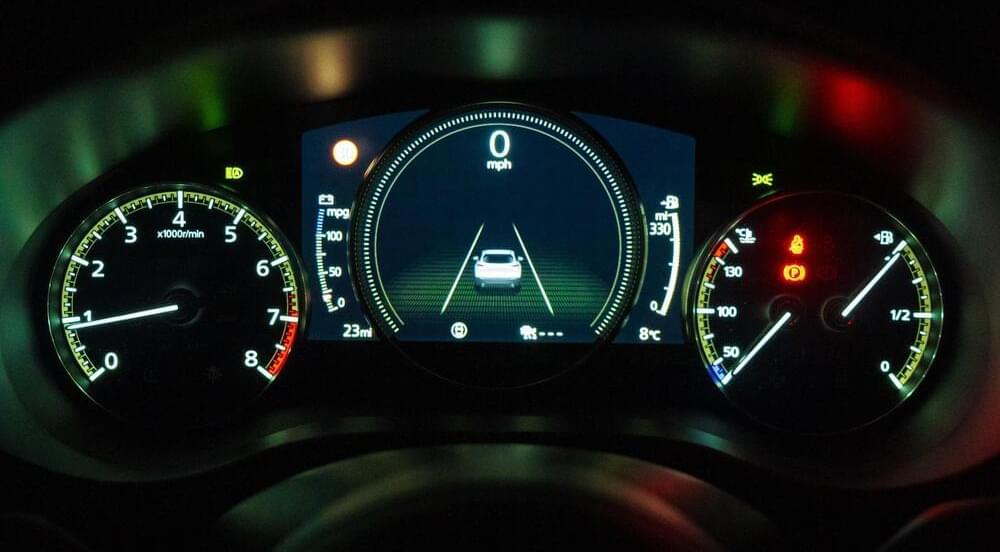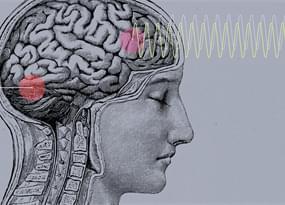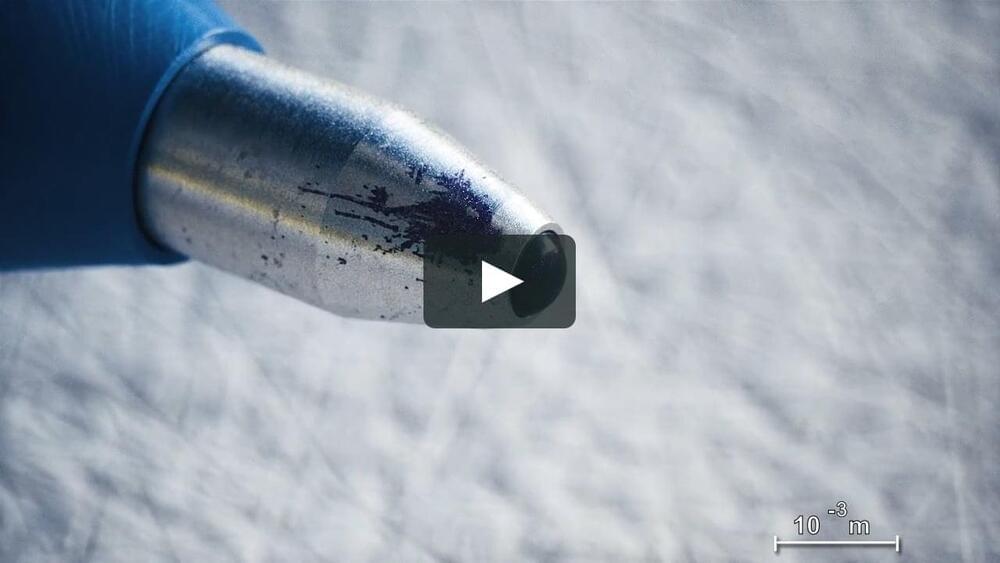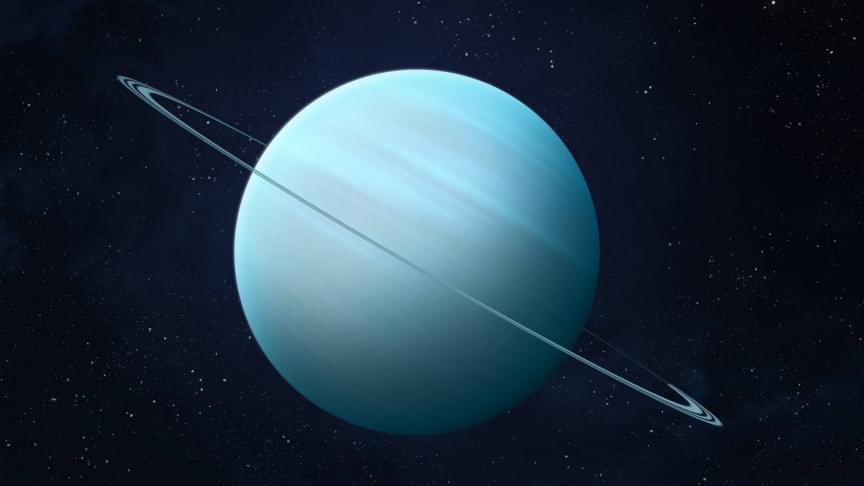Offices now require collaborative meeting rooms that use technology to enable greater parity between the in-person and virtual-participant experience.
Out with the giant conference table, in with the big screen.
The traditional layout of meeting rooms is undergoing a radical rethink as companies grapple with ways to create optimal collaboration spaces for hybrid teams.
At the newly-designed offices of the pharmaceutical giant GSK, architects at FCA reconfigured a key boardroom to look more like a small movie theater. Multiple projection screens are intended to create a sense of parity among virtual and in-person participants; carpeting and acoustical panels are installed to improve a meeting’s sound quality; and plush seating makes marathon sessions more comfortable.
An automated system called Guardian is being developed by the Toyota Research Institute to amplify human control in a vehicle, as opposed to removing it.
Here’s the scenario: A driver falls asleep at the wheel. But their car is equipped with a dashboard camera that detects the driver’s eye condition, activating a safety system that promptly guides the vehicle to a secure halt.
That’s not just an idea on the drawing board. The system, called Guardian, is being refined at the Toyota Research Institute (TRI), where MIT Professor John Leonard is helping steer the group’s work, while on leave from MIT. At the MIT Mobility Forum, Leonard and Avinash Balachandran, head of TRI’s Human-Centric Driving Research Department, presented an overview of their work.
The presenters offered thoughts on multiple levels about automation and driving. Leonard and Balachandran discussed particular TRI systems while also suggesting that — after years of publicity about the possibility of fully automated vehicles — a more realistic prospect might be the deployment of technology that aids drivers, without replacing them.
How to make a muon beam
Posted in futurism
To create muons, accelerator operators at Fermilab send trillions of protons through a series of sophisticated machines:
For the Muon g-2 experiment, researchers create billions of muons to study their surprising properties.
FALLS CHURCH, Va. (AP) — The Arlington County Board gave unanimous approval Saturday to Amazon’s plans to build a unique, helix-shaped tower as the centerpiece of its emerging second headquarters in northern Virginia.
Amazon announced the plans in February 2021 for the eye-catching, 350-foot tower to anchor the second phase of its redevelopment plans. The new office towers will support a second headquarters for Amazon that is expected to welcome more than 25,000 workers when it’s complete.
The helix is one of several office towers granted approval, but the helix stands out. The spiral design features a walkable ramp wrapping around the building with trees and greenery planted to resemble a mountain hike.
Joe Biden has been accused of having “no idea” after he misunderstood a journalist’s question about the public health authority ‘Title 42’ and instead begun speaking about a Department of Justice appeal of airplane mask mandates.
𝙉𝙚𝙪𝙧𝙤𝙨𝙘𝙞𝙚𝙣𝙩𝙞𝙨𝙩𝙨 𝙝𝙖𝙫𝙚 𝙡𝙤𝙣𝙜 𝙖𝙨𝙥𝙞𝙧𝙚𝙙 𝙩𝙤 𝙪𝙣𝙙𝙚𝙧𝙨𝙩𝙖𝙣𝙙 𝙩𝙝𝙚 𝙞𝙣𝙩𝙖𝙣𝙜𝙞𝙗𝙡𝙚 𝙥𝙧𝙤𝙥𝙚𝙧𝙩𝙞𝙚𝙨 𝙤𝙛 𝙩𝙝𝙚 𝙢𝙞𝙣𝙙. 𝙊𝙪𝙧 𝙢𝙤𝙨𝙩 𝙩𝙧𝙚𝙖𝙨𝙪𝙧𝙚𝙙 𝙘𝙚𝙧𝙚𝙗𝙧𝙖𝙡 𝙦𝙪𝙖𝙡𝙞𝙩𝙞𝙚𝙨, 𝙡𝙞𝙠𝙚 𝙩𝙝𝙚 𝙖𝙗𝙞𝙡𝙞𝙩𝙮 𝙩𝙤 𝙩𝙝𝙞𝙣𝙠, 𝙬𝙧𝙞𝙩𝙚 𝙥𝙤𝙚𝙩𝙧𝙮, 𝙛𝙖𝙡𝙡 𝙞𝙣 𝙡𝙤𝙫𝙚 𝙖𝙣𝙙 𝙚𝙫𝙚𝙣 𝙚𝙣𝙫𝙞𝙨𝙞𝙤𝙣 𝙖 𝙝𝙞𝙜𝙝𝙚𝙧 𝙨𝙥𝙞𝙧𝙞𝙩𝙪𝙖𝙡 𝙧𝙚𝙖𝙡𝙢, 𝙖𝙧𝙚 𝙖𝙡𝙡 𝙜𝙚𝙣𝙚𝙧𝙖𝙩𝙚𝙙 𝙞𝙣 𝙩𝙝𝙚 𝙗𝙧𝙖𝙞𝙣. 𝘽𝙪𝙩 𝙝𝙤𝙬 𝙩𝙝𝙚 𝙨𝙦𝙪𝙞𝙨𝙝𝙮, 𝙥𝙞𝙣𝙠𝙞𝙨𝙝-𝙜𝙧𝙖𝙮, 𝙬𝙧𝙞𝙣𝙠𝙡… See more.
The Neuro-Network.
𝐌𝐚𝐩𝐩𝐢𝐧𝐠 𝐭𝐡𝐞 𝐛𝐫𝐚𝐢𝐧 𝐭𝐨 𝐮𝐧𝐝𝐞𝐫𝐬𝐭𝐚𝐧𝐝 𝐭𝐡𝐞 𝐦𝐢𝐧𝐝
𝙉𝙚𝙬 𝙩𝙚𝙘𝙝𝙣𝙤𝙡𝙤𝙜𝙮 𝙞𝙨 𝙚𝙣𝙖𝙗𝙡𝙞𝙣𝙜 𝙣𝙚𝙪𝙧𝙤𝙨𝙘𝙞𝙚𝙣𝙩𝙞𝙨𝙩𝙨 𝙩𝙤 𝙢𝙖𝙠𝙚 𝙞𝙣𝙘𝙧𝙚𝙖𝙨𝙞𝙣𝙜𝙡𝙮 𝙙𝙚𝙩𝙖𝙞𝙡𝙚𝙙 𝙬𝙞𝙧𝙞𝙣𝙜 𝙙𝙞𝙖𝙜𝙧𝙖𝙢𝙨 𝙩𝙝𝙖𝙩 𝙘𝙤𝙪𝙡𝙙 𝙮𝙞𝙚𝙡𝙙 𝙣𝙚𝙬 𝙞𝙣𝙨𝙞𝙜𝙝𝙩𝙨 … See more.
New technology is enabling neuroscientists to make increasingly detailed wiring diagrams that could yield new insights into brain function.
By Monique Brouillette.
The Super Zoom
Posted in quantum physics
CG animation of amazing zoom to macro view to the “quantum world”, shown on an approximate scale of the reality of physics…
There are signs that can tell you if your webcam has been hacked or not. With the increasing cases of data breaches and hacks, there is no surprise if there are people who are concerned if their devices are protected enough from any attack.
Could SpaceX be heading to Uranus next? The National Academies of Sciences, Engineering, and Medicine seems to think it should. The organization has released its latest decadal survey of planetary science and astrobiology. According to a report by Teslarati published on Wednesday, the survey hints that NASA should undertake a flagship mission to Uranus on SpaceX’s Falcon Heavy rocket.
The Uranus Orbiter and Probe
The mission is not entirely new. Called the Uranus Orbiter and Probe (UOP), the proposal has been under work for several years by a team that includes scientists from NASA, the University of California, and Johns Hopkins University. Now, with SpaceX’s Falcon Heavy rocket, the researchers feel they have the technology to make their long-held dream a reality.









